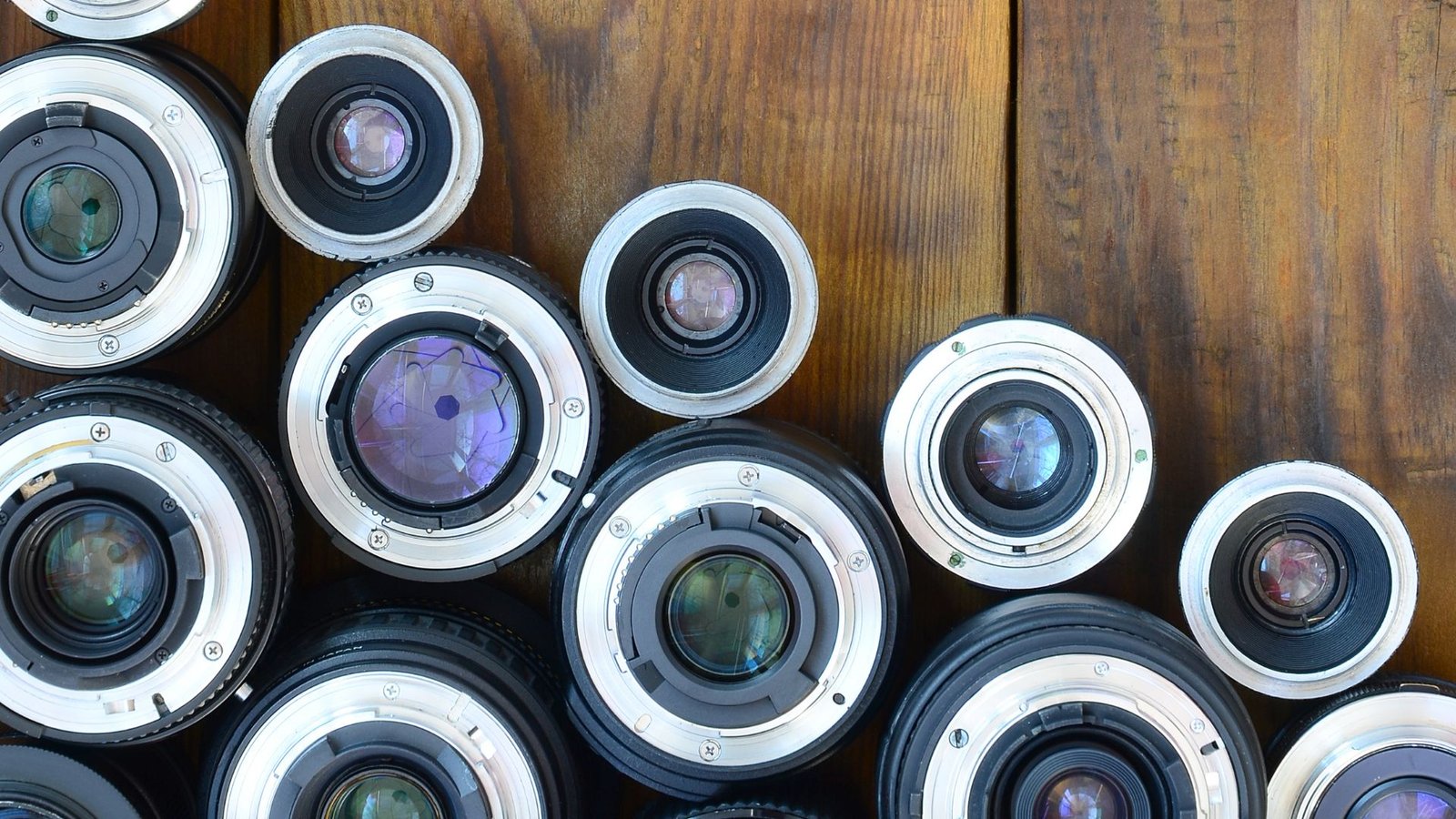Have you ever wondered why camera lenses are curved rather than being flat pieces of glass? Camera lenses are some of the most important and defining parts of any camera system. They act as the intermediary between the light coming in from a scene and the image sensor or film that ultimately captures the photo. One of the key design aspects of lenses is that they are curved rather than being flat slabs of glass. This curvature plays a vital role in how the lens is able to focus light properly and deliver a high-quality image. While the exact reasons for lens curvature may not seem obvious at first glance, there are a few core technical reasons why curved lenses are necessary for photography.
The Basics of Camera Lenses
Before we explore the curvature of camera lenses, let’s establish a basic understanding of how lenses work. A camera lens is essentially a piece of glass or other transparent material with curved surfaces. Light travels through these surfaces, bending and focusing the light onto the camera sensor or film, creating a sharp and clear image.
Lenses can be broadly categorized into two types: convex and concave. Convex lenses bulge outward and converge incoming light rays, while concave lenses curve inward and cause light rays to diverge. Camera lenses typically use convex lenses, and the degree of curvature plays a crucial role in determining the lens’s focal length and optical properties.
The Basic Principle of Light and Lenses:
To understand why camera lenses are curved, it’s essential to first explore the fundamental principles of light and optics. Light travels in straight lines, but its direction can change when it passes through different media, such as air, glass, or water. This phenomenon is known as refraction. When light enters a denser medium (like glass) from a less dense one (like air), it slows down and bends at an angle.
A camera lens uses this property to direct light in such a way that it forms a focused image on the camera’s sensor or film. In essence, the lens bends or refracts light to a specific point, where it can be captured in sharp detail. If the lens were flat, it would not be able to focus light in the same way, resulting in a blurry or distorted image. Curved surfaces allow the lens to refract light more efficiently and focus it in a controlled manner.
2. Refraction and Focusing:
When light passes through a curved lens, it refracts in a way that focuses the light rays to a specific point. Lenses are generally made of transparent materials such as glass or acrylic, which have the necessary optical properties to bend light effectively.
The key to understanding why lenses are curved lies in the concept of focal length. The focal length is the distance between the center of the lens and the point where the light converges to form a sharp image. Lenses with different curvatures have varying focal lengths, and the curvature directly impacts this distance.
- Convex Lenses: The most common type of lens in camera systems is convex. Convex lenses are thicker at the center and thinner at the edges, allowing light rays to converge at a point after passing through the lens. This convergence is what allows the lens to focus light and form a sharp image. The more pronounced the curvature, the shorter the focal length, which in turn results in a wider field of view (ideal for wide-angle lenses).
- Concave Lenses: These lenses are thinner at the center and thicker at the edges, causing light rays to diverge rather than converge. Concave lenses are less commonly used in cameras but can be found in some specialized optical systems for correcting distortions or controlling light paths.
In a camera lens system, the curvature of the lens determines how light is bent, how sharp the image will be, and where the light will converge on the sensor. If the curvature were too flat, light would not focus properly, leading to a soft or unclear image.
3. Reducing Optical Aberrations:
Optical aberrations are imperfections that can distort the image quality and occur when the light does not focus in an ideal manner. Several types of optical aberrations are minimized by the careful curvature of a camera lens:
- Chromatic Aberration: This occurs when different wavelengths of light (colors) are refracted by different amounts, causing color fringing around the edges of objects in the image. A curved lens can help control this by ensuring that the light is focused at a more uniform point, reducing the effects of chromatic aberration.
- Spherical Aberration: Spherical aberration happens when light rays passing through the edges of a spherical lens do not converge at the same point as those passing through the center. This can cause the image to appear blurry or soft. Curved lenses are designed with specific shapes to correct spherical aberration, ensuring that all light rays focus at the same point.
- Distortion: Distortion occurs when straight lines in the scene appear curved in the image. Barrel distortion causes lines to bend outward, while pincushion distortion bends them inward. The curvature of the lens plays a critical role in minimizing these distortions. By designing lenses with specific curvatures, manufacturers can minimize these types of optical imperfections.
Curvature is a crucial element in correcting and controlling these aberrations, ensuring that the lens performs optimally and delivers sharp, high-quality images.
4. The Role of Curvature in Depth of Field:
Another critical aspect of a camera lens is its ability to control the depth of field. Depth of field refers to the zone of the image that appears in sharp focus, with areas in front of or behind the focal point appearing blurred. The curvature of the lens plays a significant role in determining the depth of field.
- Wide Aperture and Shallow Depth of Field: Lenses with a larger aperture (smaller f-number) and more pronounced curvature tend to focus light on a smaller area, which creates a shallow depth of field. This is ideal for portraits or close-up shots, where the subject is sharply in focus, while the background is artistically blurred (creating a pleasing bokeh effect).
- Narrow Aperture and Deep Depth of Field: On the other hand, lenses with smaller apertures (larger f-number) and less curvature allow more light to spread out, resulting in a greater depth of field. This is advantageous in landscape photography, where both the foreground and background need to be in focus.
The curvature of the lens determines how light rays converge on the sensor, influencing the resulting image’s sharpness and how much of the scene appears in focus. By controlling curvature, photographers can manipulate depth of field to achieve the desired creative effect.
5. The Evolution of Lens Curvature in Modern Photography:
The design and construction of camera lenses have evolved significantly over the years. Early lenses were often simple, with a single spherical lens element. However, as photographic techniques improved and more sophisticated cameras were developed, lens designs became more complex. The curvature of lenses became more refined, with lenses consisting of multiple elements arranged in specific configurations.
- Aspherical Lenses: Aspherical lenses are designed with non-spherical curves, which helps reduce certain types of optical distortions, such as spherical aberration. These lenses can be made thinner and lighter than traditional spherical lenses, improving image quality and camera portability.
- Zoom Lenses: Zoom lenses offer a variable focal length, allowing photographers to adjust the magnification and composition without physically moving the camera. The curvature of the individual lens elements in a zoom lens is meticulously designed to ensure that light is focused evenly across the entire zoom range. The curvature of zoom lenses needs to be adjustable as the focal length changes, ensuring consistent image quality.
- Prime Lenses: Prime lenses have a fixed focal length and often use simpler, high-quality optics. The curvature of prime lenses is more straightforward, but manufacturers carefully select curvature to achieve the sharpest possible image quality.
In modern cameras, especially in digital and mirrorless systems, lenses are often designed to meet the needs of different types of photography. Lenses for professional use are constructed with advanced curvatures and multi-element designs to provide the best optical performance.
6. The Interaction Between Lens Curvature and Sensor Design:
The curvature of a camera lens also interacts with the design of the camera’s sensor. Modern image sensors, especially in digital cameras, are designed with specific characteristics that require lenses to be optimized for that sensor’s size and resolution. The lens must focus light accurately across the entire sensor to ensure that the resulting image is sharp from corner to corner.
For example, full-frame sensors (which are the same size as a 35mm film frame) require lenses that have a wider curvature to cover the larger area. Crop sensors (found in many DSLR and mirrorless cameras) are smaller, so the curvature of the lens may be slightly different to ensure that the image is evenly focused across the smaller sensor.
Moreover, the curvature of the lens also needs to account for the sensor’s pixel density. Higher-resolution sensors have more pixels packed into the same area, which requires lenses to focus light more precisely to prevent pixelation or blurring.
Conclusion
The curvature of camera lenses is not an arbitrary design feature but a critical aspect of how lenses function to capture clear, sharp images. By curving the lens surface, light can be refracted and focused accurately on the image sensor, minimizing optical aberrations and controlling the depth of field. Whether in a simple point-and-shoot camera or a sophisticated professional DSLR, the design and curvature of lenses ensure that photographers can capture images with the desired sharpness, clarity, and artistic effect.
Through the years, lens designs have evolved to incorporate more complex curvatures and multiple lens elements, allowing for better image quality, more creative control, and improved versatility in a range of photographic applications. Understanding why camera lenses are curved is essential for photographers, as it unlocks the underlying mechanics of how lenses interact with light, shaping the images we create.

